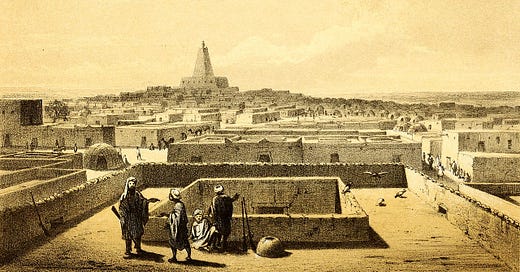Welcome to
. The following is part of our Atlas’ Notebook series, featuring art, poetry, literature, cartography, and photography, all centred on a particular place. For the full map of Cosmographia posts, see here.At the southern edge of the Sahara desert lies the ancient city of Timbuktu. It began life as a seasonal settlement that waxed and waned with the floods of the Niger River, some 10 miles to its south. But its strategic position soon saw it develop into a key stop on the caravan routes that connected Sub-Saharan Africa with the Mediterranean.
From the 14th century, the settlement entered a golden age of trade and scholarship. Gold, ivory, salt and slaves enriched the mudbrick trading post, and it wasn’t long before rumours of a great city, lying somewhere among the Sahara’s shifting sands, reached Europe.
Like Atlantis before it, and Eldorado later, Timbuktu became a place of the imagination, synonymous with the faraway. Tall tales were told, legends spread far and wide. A city paved with gold, adorned with unimaginable riches, was waiting out there, hidden among the shimmering dunes. But there was one crucial difference: Timbuktu was no myth. It was real.





